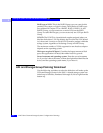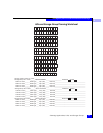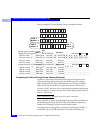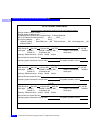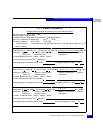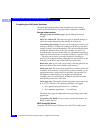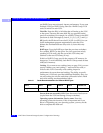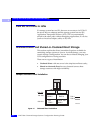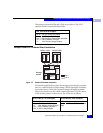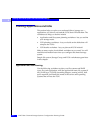
3
Planning Applications, LUNs, and Storage Groups
3-15
Planning File Systems and LUNs with Shared Switched Storage
LUN ID. The LUN ID is a hexadecimal number assigned when
you bind the disks into a LUN. By default, the ID of the first LUN
bound is 0, the second 1, and so on. Each LUN ID must be unique
within the storage system, regardless of its Storage Group or
RAID Group.
The maximum number of LUNs supported on one host-bus
adapter depends on the operating system.
RAID Group ID. This ID is a hexadecimal number assigned
when you create the RAID Group. By default, the number of the
first RAID Group in a storage system is 0, the second 1, and so on,
up to the maximum of 1F (31).
Size (RAID Group size). Enter the user-available capacity in
gigabytes (Gbytes) of the whole RAID Group. You can determine
the capacity as follows:
For example,
• A five-disk RAID 5 or RAID 3 Group of 36-Gbyte disks holds
144 Gbytes;
• An eight-disk RAID 1/0 Group of 36-Gbyte disks also holds
144 Gbytes;
• A RAID 1 mirrored pair of 36-Gbyte disks holds 36 Gbytes;
and
• An individual disk of an 36-Gbyte disk also holds 36 Gbytes.
Each disk in the RAID Group must have the same capacity;
otherwise, you will waste disk storage space.
LUN size. Enter the user-available capacity in gigabytes (Gbytes)
of the LUN. You can make this the same size as the RAID Group,
above. Or, for a RAID 5, RAID 1, RAID 1/0, or RAID 0 Group,
you can make the LUN smaller than the RAID Group. You might
do this if you wanted a RAID 5 Group with a large capacity and
wanted to place many smaller capacity LUNs on it; for example,
to specify a LUN for each user. However, having multiple LUNs
RAID5 or RAID-3 Group: disk-size * (number-of-disks - 1)
RAID 1/0 or RAID-1 Group: (disk-size * number-of-disks) / 2
RAID 0 Group: disk-size * number-of-disks
Individual unit: disk-size




